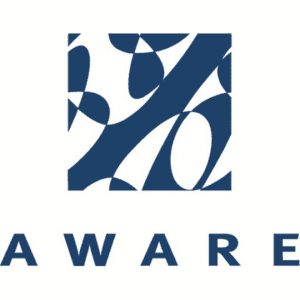Aware has been an important player in the biometrics industry for decades now, but the company has enjoyed renewed attention in recent years thanks to its Knomi solution. A mobile authentication app that first relied primarily on facial recognition, Knomi has just undergone an upgrade, with voice biometrics added to the mix alongside enhanced liveness detection capabilities.
Naturally, then, Knomi was the starting point in a new interview between FindBiometrics President & CEO Peter O’Neill and Aware’s Chief Commercial Officer, Rob Mungovan. From there, the conversation moves on to Aware’s recent success in Latin America, general obstacles to the adoption of biometric authentication, new and emerging opportunities in the wake of COVID-19, and the advancement of anti-spoofing technology. The interview also touches on the important matters of privacy and education, and the use of Aware’s fingerprint recognition technology by US Customs and Border Protection.
It’s a wide-ranging discussion that traverses a number of topics that are important to organizations across today’s biometrics industry. Check out the full interview below to see what a long-time industry player has to say about them:
Peter O’Neill, President & CEO, FindBiometrics: Aware just released a new version of your Knomi product, calling it the most secure mobile biometric authentication solution available. What can you tell us about the biometrics for authentication over the last few years? What have been the main drivers?
Rob Mungovan, Chief Commercial Officer, Aware: I think the main drivers for biometric authentication solutions such as Knomi have been coming largely from consumer facing services. More specifically, consumer facing financial services that have been enabled—or seek to be enabled through the utilization of mobile phones—in , everyday use for account access, and creating new accounts for onboarding new customers.
Peter O’Neill: Well, we’ve certainly seen that in our examination of the markets. I noticed that you’ve had some recent success with Knomi in Latin America. Can you tell us a little bit about that, specifically in the financial services area?
Rob Mungovan: Despite being a small company, Aware has a global footprint with partners and sales reps in almost every region of the world. Latin America has been a very aggressive early adopter of enabling citizens’ mobile phones to create new accounts remotely without ever stepping foot in a bank or financial institution. We, coincidentally, started developing Knomi several years ago in anticipation of the adoption of biometric systems and services via mobile phones.
Aware has a strong sales team representing us in Latin America and they secured some early opportunities in the region, which we were able to execute on because we were first movers in certain areas. Since then, our Latin American customers have helped us improve the product, and we have several systems in production right now supporting their end users.
Peter O’Neill: You raised an interesting point there, Rob. We’re seeing in the industry – as the biometric industry grows and becomes very active – a lot of companies come into the marketplace without a lot of experience. When you mentioned the learning that occurs with actual deployment of these systems, and how they mature and grow over time, it’s a critical part of constant improvement, especially in the biometric industry. Wouldn’t you agree?
Rob Mungovan: I definitely would agree, particularly from the perspective of how long it takes to get these customers up and running. It looks relatively easy in hindsight, but they tend to have long design, QA, and pilot cycles. You have to be in the game for the long-term. You have to be a stable, funded company that’s profitable, and can support the costs associated with the early stages of adoption. This includes technology development, which is a continuously ongoing process. You have to have the staff to develop, maintain, and deliver the technology, which I’m proud to say Aware can boast.
Peter O’Neill: What would you say are some of the obstacles for the general uptake in biometric authentication?
Rob Mungovan: Depending on what region of the world you’re looking at, there are different things that prevent adoption. In Latin America, it might be the size of the app and their concerns with respect to code size and the size of the payload. Everything has a cost associated with it. The time to download—which you get charged for in many countries—and the time to upload all incur costs, so there’s a focus on constraining size and minimizing payload. Places like the European Union, however, have very strict data privacy laws. They have requirements that, frankly, make uptake more complicated because the data, by and large, has to be maintained on the phone. This means you can’t implement a really streamlined, slim application because you have to put a lot of code on the device.
Here in the U.S., it seems like we’re a country that watches and waits a little bit with some of these newer technologies. For example, on my phone I have Apple’s iTouch capability to access my account, but I don’t have any other kind of biometric system that’s run by a bank, or controlled by the bank itself.
Peter O’Neill: Given what’s happening in our current situation globally, we are seeing trends that have been in the works for quite some time, all growing rapidly right now! We’re starting to see it in the financial services area, remote work and in healthcare especially. Does this present opportunities for our industry?
Rob Mungovan: I think it certainly does, particularly when you consider how it’s still being adopted primarily on mobile phones. One example of how we’re seeing it adopted in remote situations involves the concept of the remote workforce, and the idea of ensuring certain workers are online, in place, and working at the time they’re supposed to be. We have seen applications and requirements for systems where you provide a biometric through the phone to ensure that it’s you at the right position, the right location, and the right time.
Peter O’Neill: And further around biometric authentication systems, anti-spoofing activity has really started to become a hot topic. What steps do you think the industry’s taken? Are we doing enough?
Rob Mungovan: The biggest innovators of anti-spoofing development seem to have been smaller companies, such as Aware. In our case we immediately recognized the need for it based on early discussions with prospective customers, and we set about trying to design a system to detect presentation attacks to detect artificial faces or the representation of faces that were not, in fact, genuine or live people.
Particularly within the facial domain, it turns out the matching algorithms are, by and large, all pretty accurate nowadays, and end customers and institutions are somewhat taking that statement for granted. What’s more of a differentiator is the ability to design a system to detect a fraudulent representation of a human face, or a voice. That’s very important, particularly with respect to, what we call, unsupervised enrollments, or onboarding to gain access into a system or privilege where there’s no person there supervising it. You need to be able to present a live genuine face, and I’m proud to say our Knomi solution is very capable in this regard.
Peter O’Neill: Your latest Knomi product combines face and voice; a multimodal aspect. Why is that important?
Rob Mungovan: As an industry insider, I can understand the strengths and weaknesses of various techniques, various biometric techniques. And while face technology and face matching has been exceptionally improved across the board in recent years it still has some limitations. There are cases where you cannot use it. If you’re in a very dark room, or outside at the beach in the bright sunshine, face matching can be weak and the system is not as confident that it’s you.







Follow Us